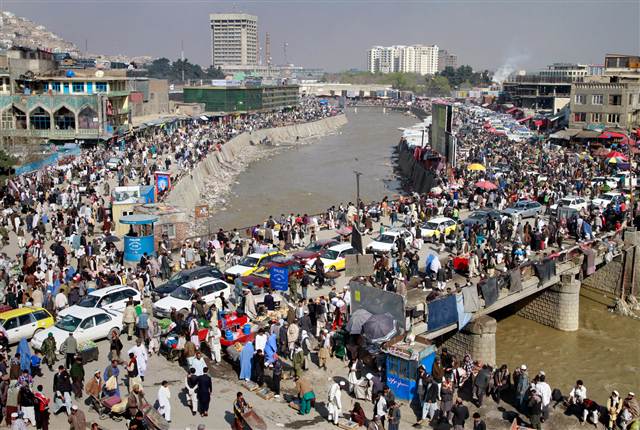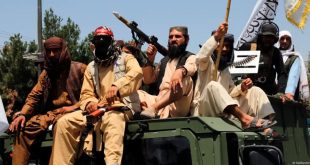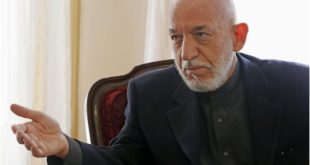By Wakeel Khan-Following the fall of Sassanid Empire, two centuries of Arab hegemony in Khorasan was never popular in the Pashtun belt. This is evident from fierce resistance that was offered here to all Arabian attacks. A change in political realities, however, had come hard on the heels of Arab troops in Khorasan, even as for the most part there was nowhere to see any conspicuous change in the Pashtun belt, which owes only to the fact that all Arabian attempts on the occupation of Pashtun territory had met a desperate failure and with great losses for the Arab forces.
Emerging from Zaranj in southern Afghanistan, Saffarid insurgency is the first ever indigenous revolution in the history of modern Afghanistan. It spread eastward like fire to Zabul, Ghazni, Gardez and Tochi river valley, overtaking Kabul in 870 A.D, and finally reaching River Oxus to the North in A.D. 872. Arab chronicles are mostly unanimous on calling this the insurgency of “Kharijites”. We know that throughout their rule in Khorasan, Arabs held Seistan and its capital Zaranj firmly under control and used it as a military base to further their mostly unsuccessful eastern expansion, but we also see that from the outset there remained pockets of popular resistance in Seistan. Not surprisingly, after the death of Caliph Abdul Malik, Seistan became virtually ungovernable for Arabs, and soon Yaqub-i-Laith, a local Coppersmith from Zaranj in modern Nimroz province of Afghanistan, declared Seistan independent of the Caliph of Baghdad in A.D 861.
Saffarids had a huge intellectual base, and were immensely popular in Afghanistan. Here, for the first time after the fall of Sassanians, they restored order after Arab hegemony had upset it, unified people popularly, and bound them politically. But more importantly, fully informed that history of 250 years of Arab rule – like it or like it not – could not be reverted, Saffarids for the greater part unified religion in Afghanistan, something which had by now necessitated political unity. This, however, is by no means the first time in Afghanistan that political realities had demanded a change in religion. The fact is that the use of religion as a matter of political expediency predates Islam. We know that before Arabs the later Kushan rulers had also realized that in face of changing political circumstances Buddhism was no more compatible with harsh realities of politics and governance and therefore they supplemented it with some of the cult from Brahmanism, and even when their religious policy was liberal and also on the social level it was politically not expedient to end the religious schism which prevailed between Zoroastrianism and Buddhism in Afghanistan, it had not escaped the Kushans that for the same reason that rulers should change Buddhism the society should retain it, since Buddhism was nonetheless more of advantage in socio-political order if practiced only by society and not by rulers. We also know that with a view to consolidate his internal control in face of British colonial hegemony, Amir Abdurrehman had also Islamized Nuristan for purely political reasons.
But more has yet to be explored of the Saffarid period. It seems the name of the most glorious historian of the Saffarid period could perhaps never be known, such as all other countless names that brought about this huge change and revolution in the length and breadth of Afghanistan. The book of this anonymous writer is called Tarikh-i-Seistan (History of Seistan) and is written in the Dari language – the first ever local history in Afghanistan, a genre which continues to the present day and its greatest writer of the 20th century is perhaps Faiz Mohammad Katib Hazara, who also remained secretary to Amir Habibullah Khan. Just as Islam was indigenized in the Saffarid period, history was also looked at with local perspective.
The book is unmistakable on the enmity of Saffarids with and their contempt for Arabism of the Abbasids. Thus the anonymous writer rejoices in the nativeness of Yaqub-i-Laith, recounting that once on a convivial occasion when an Arabic ode was read to him, Yaqub said in protest as to what was the use of listening to an ode which he did not even understand. “This was the first time”, the author continues, “that poems were recited in Dari… while before that when the Iranians were overpowered by Arabs, it had become a custom to recite in Arabic.”
With Saffarids, Islam was harmonized with local culture in Afghanistan. During this period Gardez and Ghazni developed into great cities of immense political and economic importance. Gardez in particular remained a stronghold of, according to Arab chronicles, Kharijite activities and its greatest historian was Abu Saeed Gardezi. Moreover, the Saffarid era is important because it saw the emergence of the local Khalji tribe as a military force in Ghazni, but I will take on this subject in the next article. (The Pashtun Times)
The writer is a student of Pakistan Studies at Quaid-i-Azam University. He can be reached at [email protected]
 Afghanistan Times Latest News and Analysis from Afghanistan and the Region
Afghanistan Times Latest News and Analysis from Afghanistan and the Region




